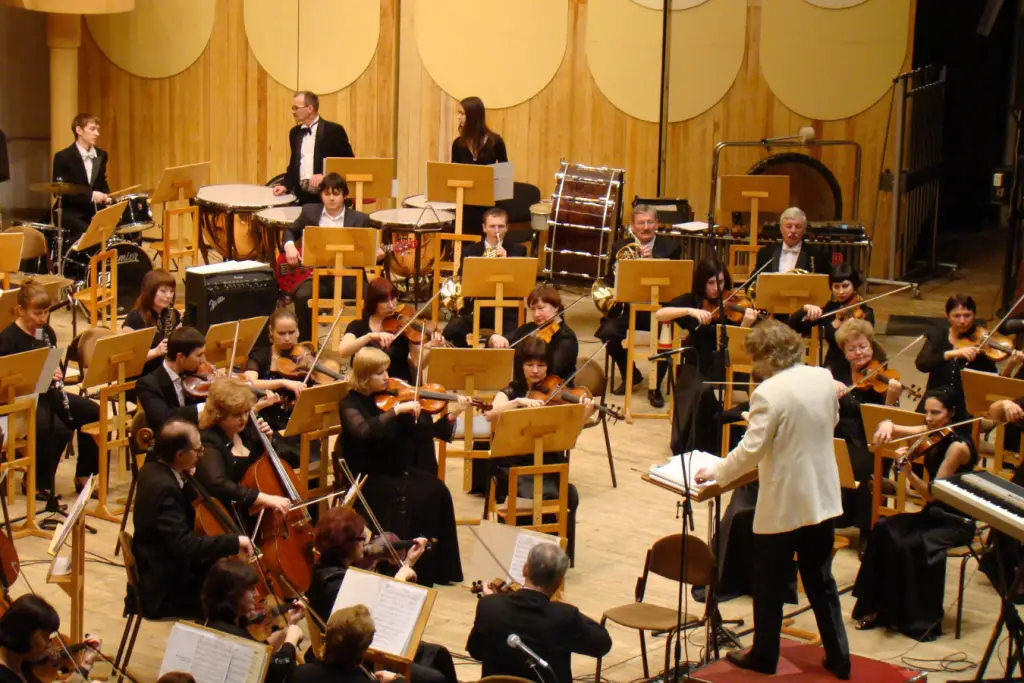Multiphonics on the piccolo create unique and complex sound textures. These advanced techniques produce multiple pitches simultaneously, expanding the piccolo’s expressive range. While challenging to master, multiphonics offer exciting possibilities for contemporary composers and performers.
To play multiphonics on the piccolo, musicians use special fingerings and precise embouchure control to produce two or more notes at once. The process involves finding the right balance of air pressure, lip position, and finger placement. Each multiphonic fingering requires careful practice to achieve consistent results.
Piccolo multiphonics differ from those on larger flutes due to the instrument’s size and higher pitch range. Players must adapt their approach to account for the piccolo’s unique characteristics. Exploring multiphonics can open up new avenues for musical expression and extend the piccolo’s sonic palette.
Fundamentals of Piccolo Multiphonics
Piccolo multiphonics require precise technique and control. Mastering these complex sounds involves understanding the instrument’s range, employing specific fingerings and embouchure adjustments, and maintaining proper breath support.
Understanding the Piccolo Range
The piccolo’s range spans just over three octaves, from D4 to C7. Multiphonics often involve combining notes from different registers. Players must familiarize themselves with the instrument’s full range and overtone series.
Experimenting with harmonics helps develop the sensitivity needed for multiphonics. Practice producing clear harmonics across the piccolo’s range. This builds awareness of the instrument’s acoustic properties.
Certain pitch combinations work better for multiphonics. Middle and high register pairings tend to be more stable. Low register multiphonics can be challenging due to the piccolo’s small size.
Basic Techniques for Producing Multiphonics
Multiphonics on the piccolo involve producing two or more pitches simultaneously. This requires specific fingerings and careful embouchure control.
Key techniques include:
- Split embouchure: Divide the air stream to activate multiple resonances
- Partial venting: Partially cover tone holes to create additional pitches
- Cross-fingerings: Use non-standard fingerings to produce multiple frequencies
Start with simpler multiphonics involving adjacent pitches. Gradually progress to more complex combinations as control improves.
Practice each multiphonic fingering slowly. Focus on achieving a clear, balanced sound between all pitches.
Breath Control and Support
Proper breath support is crucial for stable multiphonics. Maintain consistent air pressure to sustain multiple pitches.
Develop diaphragmatic breathing to provide steady air flow. Practice long tones to improve breath control and endurance.
Experiment with air speed and direction. Subtle adjustments can significantly affect the multiphonic’s stability and tone quality.
Use a tuner to ensure pitch accuracy. Multiphonics often require slight embouchure adjustments to maintain intonation.
Regular practice of breath exercises enhances overall control. This translates to more reliable multiphonic production in performance settings.
Practical Exercises to Develop Multiphonics Skills
Mastering piccolo multiphonics requires dedicated practice and specific techniques. The following exercises focus on tone splitting and fingering patterns to help players produce multiple simultaneous pitches effectively.
Tone Splitting Exercises
Begin by practicing harmonic series on low notes. Play a low F and gradually raise the pitch while maintaining the original tone. This develops awareness of overtones and helps create the split needed for multiphonics.
Next, try sustaining a low note while gently humming a higher pitch. This trains the embouchure to produce two distinct tones simultaneously. Start with intervals of a fifth or octave, then gradually reduce the interval.
Practice alternate fingerings for the same pitch. This familiarizes players with the varied resistance and response of different fingering combinations, essential for multiphonic production.
Experiment with varying air speed and direction. Direct the air stream at different angles into the embouchure hole, noting how this affects tone production and stability.
Fingerings for Multiphonic Tones
Start with simple multiphonic fingerings that produce clear, stable results. The following table provides some common piccolo multiphonic fingerings:
| Fingering | Resulting Pitches |
|---|---|
| Low D + Eb key | D4 + A5 |
| Low G + 1st trill key | G4 + D6 |
| Low A + 2nd trill key | A4 + E6 |
Practice these fingerings slowly, focusing on consistent tone production. Begin by playing each pitch individually, then attempt to combine them.
Gradually increase the difficulty by trying more complex fingerings. Experiment with adding or removing fingers to alter the pitch combinations. Keep a practice journal to track progress and note which fingerings work best.
Advanced Techniques for Performing Multiphonics
Mastering multiphonics on the piccolo requires precise control and practice. Advanced players can explore nuanced articulation, dynamic variations, and creative applications in musical compositions.
Articulation and Dynamics in Multiphonics
Multiphonics on brass instruments involve producing multiple notes simultaneously, and similar principles apply to the piccolo. Players should start with a clear, single note and gradually introduce the second pitch while maintaining embouchure stability.
Experimenting with different articulation styles can enhance multiphonic performance. Soft articulations like legato or tenuto often work well, allowing smoother transitions between pitches. Hard articulations may disrupt the delicate balance required for multiphonics.
Dynamic control is crucial. Practice producing multiphonics at various volume levels, from pianissimo to fortissimo. This control allows for expressive playing and seamless integration into musical passages.
Using Multiphonics in Musical Contexts
Incorporating multiphonics into compositions requires careful consideration of their unique timbral qualities. Composers often use these techniques to create atmospheric effects or highlight specific musical moments.
When performing multiphonics in an ensemble, balance is key. The unusual timbre may easily overpower other instruments, so players must adjust their volume accordingly.
Practicing multiphonics daily can improve technique and consistency. Incorporate them into warm-up routines, focusing on smooth transitions and pitch accuracy.
Exploring different finger combinations and embouchure adjustments can produce a wider range of multiphonic possibilities. This experimentation expands the piccolo’s sonic palette, offering new avenues for musical expression.

